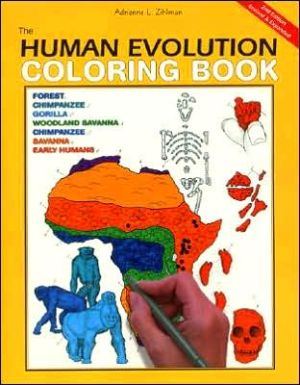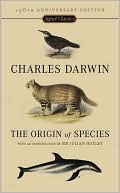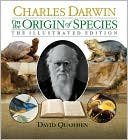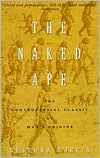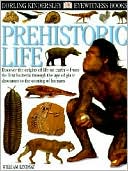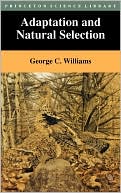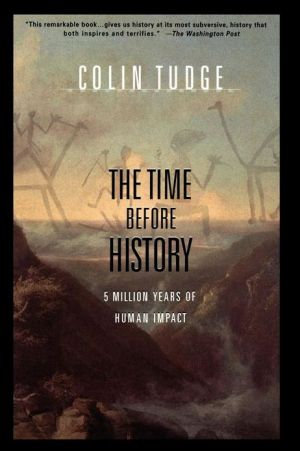Human Evolution Coloring Book, 2e
The completely revised Human Evolution Coloring Book\ \ Provides an authoritative, scientific background for understanding the origins of humanity\ Includes new discoveries and information essential for students of anthropology, primatology, paleontology, comparative anatomy, and genetics\ Brings together evidence from living primates, fossils, and molecular studies\ Explains the latest dating methods, including radioactive, paleomagnetic, and molecular clocks\ Surveys the world of living...
Search in google:
The completely revised Human Evolution Coloring Book Provides an authoritative, scientific background for understanding the origins of humanityIncludes new discoveries and information essential for students of anthropology, primatology, paleontology, comparative anatomy, and geneticsBrings together evidence from living primates, fossils, and molecular studiesExplains the latest dating methods, including radioactive, paleomagnetic, and molecular clocksSurveys the world of living primates, their ecology, locomotion, diet, behavior, and life historiesClarifies the anatomical and behavioral similarities and differences between ourselves and our closest living relatives, the chimpanzee and the gorillaResolves some long-standing mysteries about our relationship to the extinct Neanderthals
Preface to the Second Edition\ In the twenty years since I wrote the first edition of The Human Evolution Coloring Book, our knowledge of the topics touched on in the first edition have grown to daunting proportions. What an exciting time this is in the fields of evolution and anthropology! Almost every week journals like Science and Nature publish important discoveries of new fossils from Africa, Asia, or Europe; or new molecular data throwing light on primate relationships and immigrations. Many of these discoveries are reported in our national and local newspapers and other media. The material bearing on human evolution comes from many directions. Much of it is initially accessible only to specialists and hardly comprehensible to students and the general audience. My goal is to introduce information new and old that bears on human evolution, in a format that can be understood and appreciated by students and nonspecialists.\ The warm reception of the first edition by students and teachers and its translation into several languages led me to plan a revision about ten years ago. In 1990, Cabrillo College in Santa Cruz held a round-table discussion on the teaching of introductory courses in physical anthropology. Several colleagues were using the book in their classes and gave me valuable suggestions. Roberta and Don Lenkeit, long-time faculty at Modesto College, California, systematically went through each plate in the first edition, commented on its usefulness, their favorites, and the ones they didn't use at all. The suggested improvements gave me a push toward taking on this major undertaking, to rewrite, expand, and update what we know about humanevolution.\ The overview of evolution in Section I gives historical background to the development of evidence for evolution. Books like Janet Browne's 1996 biography of Charles Darwin helped me take on the impossible task of summarizing Darwin's work into less than 2000 words! The evolution exhibit at the Natural History Museum in London inspired new ways of presenting visual information. The path-breaking research of Rosemary and Peter Grant document evolutionary changes in Darwin's finches on Daphne Major in the Galápagos Islands, updating Darwin's famous deductions about the influence of natural selection in shaping changes in populations over time. During a recent trip to the Galdáagos, I felt transported back to 1858, participating in Darwin's thought processes on seeing the unique animals and plants, and their variations from island to island. Nina Jablonski's research on snub-nosed monkeys in China supports the concept of genetic drift, proposed theoretically more than 60 years ago. These examples of new research confirm the main principles of evolution and natural selection.\ The field of molecular evolution changed so much that Section 2 had to be doubled in size. My mentor, Sherwood Washburn, at the University of California Berkeley in the 1960s was ahead of his time in appreciating and teaching how molecular data provided another line of evidence for primate evolution, independent of fossils and comparative morphology. The molecular research of Vincent Sarich and Allan Wilson at Berkeley indicated that humans and African apes had a common ancestor only 5 million years ago (not 25 million, which was accepted then). This conclusion, very controversial at the time, is now the new conventional wisdom! The molecular clock, the brilliant insight of Emil Zuckerkandl and Linus Pauling, is still difficult for students to grasp, so here I devote four plates to this concept, which continues to have a tremendous impact on evolutionary studies. DNA is now such a household acronym that it appears regularly in crossword puzzles, but mitochondrial DNA and minisatellites are not quite so familiar. To convey some of the exciting "new frontiers" in evolution, I include two platesone on the homeobox, the key to the secrets of development and the connection between genes and morphology; the other on molecular data from extinct species, a real-world view of Jurassic Park.\ Section 3 on our living relatives has so many dimensions and concepts that it posed a particular challenge. I introduce our primate cousins and the way they live, against the backdrop of the brain and emotions, which are part of our mammalian heritage. Much of my own research has dealt with life history, so this section is considerably expanded to depict variation in life associated with different ages and different sexes. Fortunately, many dedicated field workers have compiled data on differential survival and reproductive outcome of the species they've studied. My own research on Gombe chimpanzee skeletons attempts to bridge the gap between "reading the bones" of fossils and interpreting bone lesions on animals whose life histories have been meticulously recorded by Jane Goodall. Her long-term research on chimpanzees and the studies of other societies make the point that not all chimpanzees are alike, but they are all innovators with their own traditions. I want to convey the continuity between chimpanzees and humans but emphasize that though the gap is narrow, it is also deep, and we're learning more all the time about its dimensions.\ Section 4 on the diversity and radiation of the primates is the longest in the book. We know so much more now than we did 20 years ago, thanks to long-term research on primate behavior, fossils, and molecules. The challenge is to convey some of the excitement and findings of dedicated field researchers and inspire young people by their example and by the recognition that there is still so much to learn. Our understanding of Madagascar lemurs is much clearer now, and the little-known tarsier is finding a new place in the primate family tree, slightly closer to the anthropoids than to the prosimians. Thanks also to dedicated field researchers, studies of New World monkeys have blossomed, to reveal the diversity in how they live and the clever ways they get food with remarkable teeth adapted to everything from gouging holes to eating hard seeds. The adaptations of Old World monkeys and apes-orangutans, gorillas, and chimpanzees-also continue to be explored and illuminated. I orient the presentations to anatomy, to give students an "inside" view of the animals' locomotion and feeding patterns, as a basis for their "outside" behavior. This view also aids in the contemplation of the fossil record, where only bones and teeth remain. Unfortunately, the decline of many primate populations and the threat of their very survival is more real than ever. It is tragic to realize how much will be lost to science and world ecology, just when we are achieving some deeper understanding of our primate family.\ Section 5 on the hominid fossil record has in some ways changed most dramatically of all. New discoveries are always exciting, and new techniques such as CT scanning promote second and third looks at well-known fossils. Such studies sometimes confirm our previous views of human evolution but more often alter those views substantially. We have learned that fossils alone do not shape our understanding of evolution. Molecular data too have had a profound influence — for instance, in identifying the chimpanzee as our closest relative, in establishing the origin of Homo sapiens in Africa about 150,000 years ago, and revealing from fossil DNA that Homo sapiens and Neanderthals are separate species that split from a common ancestor about 600,000 years ago. These discoveries have generated huge controversies among anthropologists, especially upsetting those whose previous views have been demonstrated to be inconsistent with the new data! Of course, there are honest disagreements about interpretations and classifications of fossils, such as questions surrounding the origin and species of the genus Homo some 2 to 2.5 million years ago. I present what is reasonably established and why professionals disagree. Always I emphasize that the field is in a state of flux and no one can predict what new discoveries and techniques tomorrow may bring.\ Section 6 focuses on the human species, from the development of the fertilized cell through individual growth to populations. Humans vary at all levels and through each of the life stages-what George Gaylord Simpson called the fourth dimension in the study of human evolution. Events in individual lives, activity, and population health can be read in bones and teeth, thus extending knowledge of ourselves to historical and prehistoric populations. Human biology has shaped and been shaped by our culture, so that our species has adapted to an astounding variety of different climates and environments, from parasite-ridden tropics to icy breathless altitudes. Wherever we've gone, we've taken our genes, our traditions, and our languages with us.\ This book is intended as an introduction to undergraduate students, based on my long teaching experience. Parts will be useful for students and teachers in high school, and parts as a review for graduate students. All of the book is designed to inform interested lay readers. I hope you will have fun exploring the many facets of human evolution. I draw heavily on the specialized work of many colleagues. Some of them may learn from this book what the others are doing. Some plates, like the descriptions of hands or animals, are easy and straightforward to color and understand. Some, involving molecular data and anatomical structures, require more attention, and the information will be more easily grasped when the images are colored. My intention is to convey the excitement of scientific discovery, impart a sense of history, and show that scientists are real people from all over the globe who have devoted years or lifetimes to answering questions about evolution. Naturally, only a sample of this vast sea of information can be offered here, but I hope it will help readers of all ages and backgrounds to understand more about what it means to be a human being.\ Adrienne L. Zihlman November 2000\ Santa Cruz, Ca
